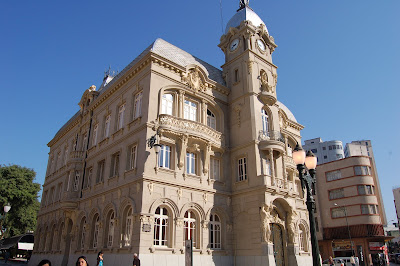

In 1871 a group of Poles arrived in Curitiba, settling in the districts of Pilarzinho, Santa Candida, Orleans and Abranches. But most of the Polish immigrants arrived in Curitiba between 1889 and 1914.
Polish immigrants were mainly devoted to agriculture. They have spread the use of the plow and other farming techniques. Curitiba is the second city outside of Poland with the largest population of Polish descendents, surpassed only by Chicago, in the United States. The Pope's Park, opened in 1980, soon after the visit of Pope John Paul II (1920-2005)to Curitiba, involves an area of 48 thousand square meters. Typical Polish immigrant Houses with all the original furniture and barns, were moved to this park at Centro Civico District of Curitiba.














































